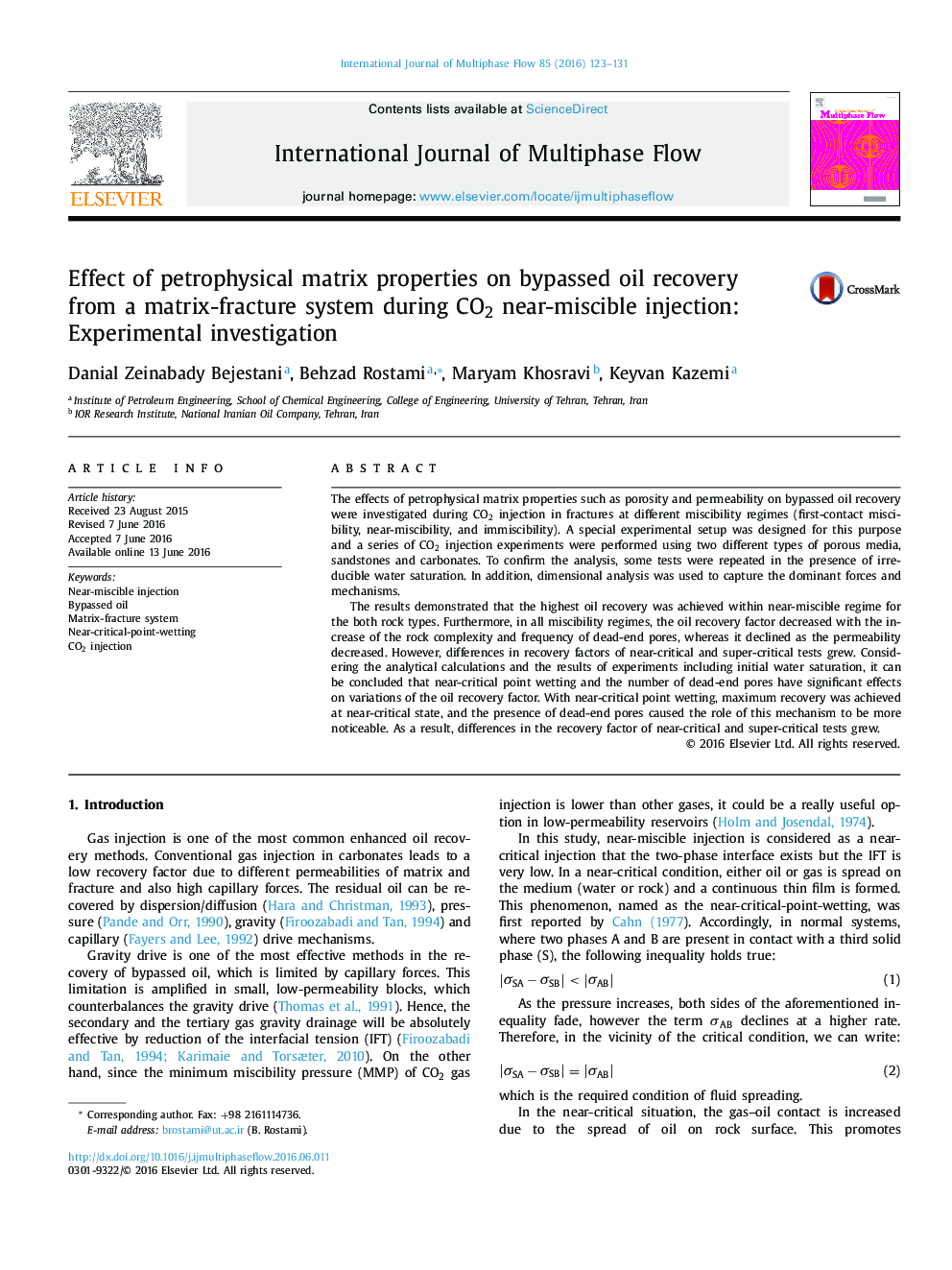| Article ID | Journal | Published Year | Pages | File Type |
|---|---|---|---|---|
| 7060228 | International Journal of Multiphase Flow | 2016 | 9 Pages |
Abstract
The results demonstrated that the highest oil recovery was achieved within near-miscible regime for the both rock types. Furthermore, in all miscibility regimes, the oil recovery factor decreased with the increase of the rock complexity and frequency of dead-end pores, whereas it declined as the permeability decreased. However, differences in recovery factors of near-critical and super-critical tests grew. Considering the analytical calculations and the results of experiments including initial water saturation, it can be concluded that near-critical point wetting and the number of dead-end pores have significant effects on variations of the oil recovery factor. With near-critical point wetting, maximum recovery was achieved at near-critical state, and the presence of dead-end pores caused the role of this mechanism to be more noticeable. As a result, differences in the recovery factor of near-critical and super-critical tests grew.
Keywords
Related Topics
Physical Sciences and Engineering
Chemical Engineering
Fluid Flow and Transfer Processes
Authors
Danial Zeinabady Bejestani, Behzad Rostami, Maryam Khosravi, Keyvan Kazemi,
